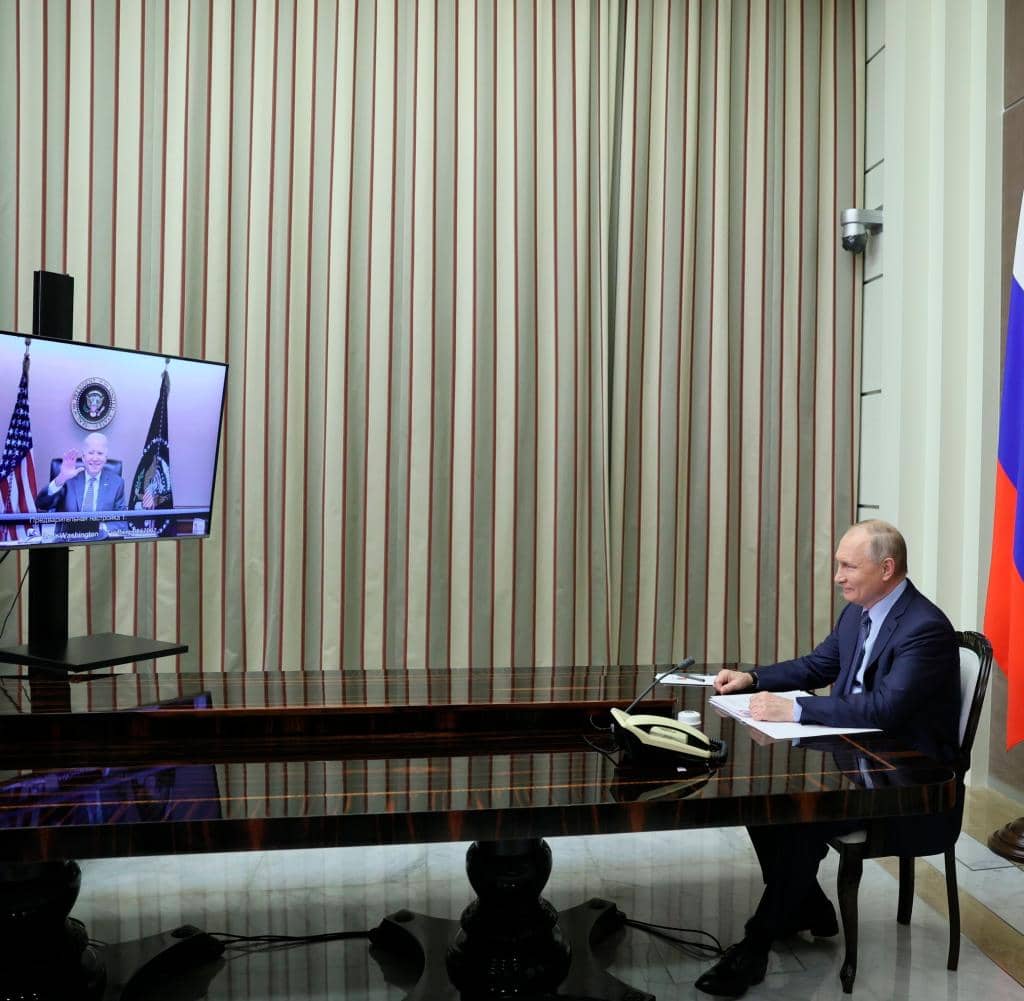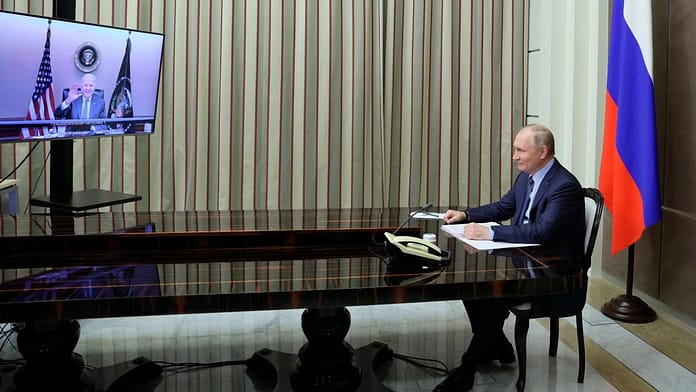Biden and Putin wrap up video summit in about two hours


Russian President Vladimir Putin and his American colleague Joe Biden
Source: AP / Mikhail Metzel
US President Joe Biden and his Russian counterpart Vladimir Putin exchanged information for nearly two hours at their visible summit over a specially protected, tap-resistant line. Possible mutual security guarantees from Russia and NATO should be one of the topics of discussion.
sUS President Vladimir Putin and fellow US President Joe Biden ended their video summit about two hours later, including heightened tensions in the conflict in Ukraine. Russian state media reported, Tuesday evening. The Kremlin had previously stated that due to the multitude of conflict issues, the conversation could be very long.
According to the Kremlin, the two heads of state communicated via a specially protected, tap-resistant line. The conversation, which began shortly after 4pm CET, was also supposed to address possible mutual security guarantees from Russia and NATO. Putin recently called on the Western military alliance to end its expansion to the east and demanded written guarantees for this.
The United States has accused Russia of deploying troops close to the border with Ukraine for weeks. According to this, the West fears a Russian invasion of the former Soviet Republic. Russia rejects this and accuses Ukraine of deploying more than 120,000 soldiers on the line in the separatist regions.
As heads of state, Putin and Biden met in person for the first time in Geneva in June. Tuesday’s video summit should also address cyber security in both countries, as well as Iran’s nuclear program and other international conflicts.
After the video summit, Biden wants to consult with European allies. The White House announced that Biden will speak to outgoing Chancellor Angela Merkel, French President Emmanuel Macron, British Prime Minister Boris Johnson and Italian Prime Minister Mario Draghi after his conversation with Putin.
During their talks the day before, the allies agreed to “remain in close contact with each other in order to develop a coordinated and comprehensive approach to responding to Russia’s military rearmament on Ukraine’s borders.”






